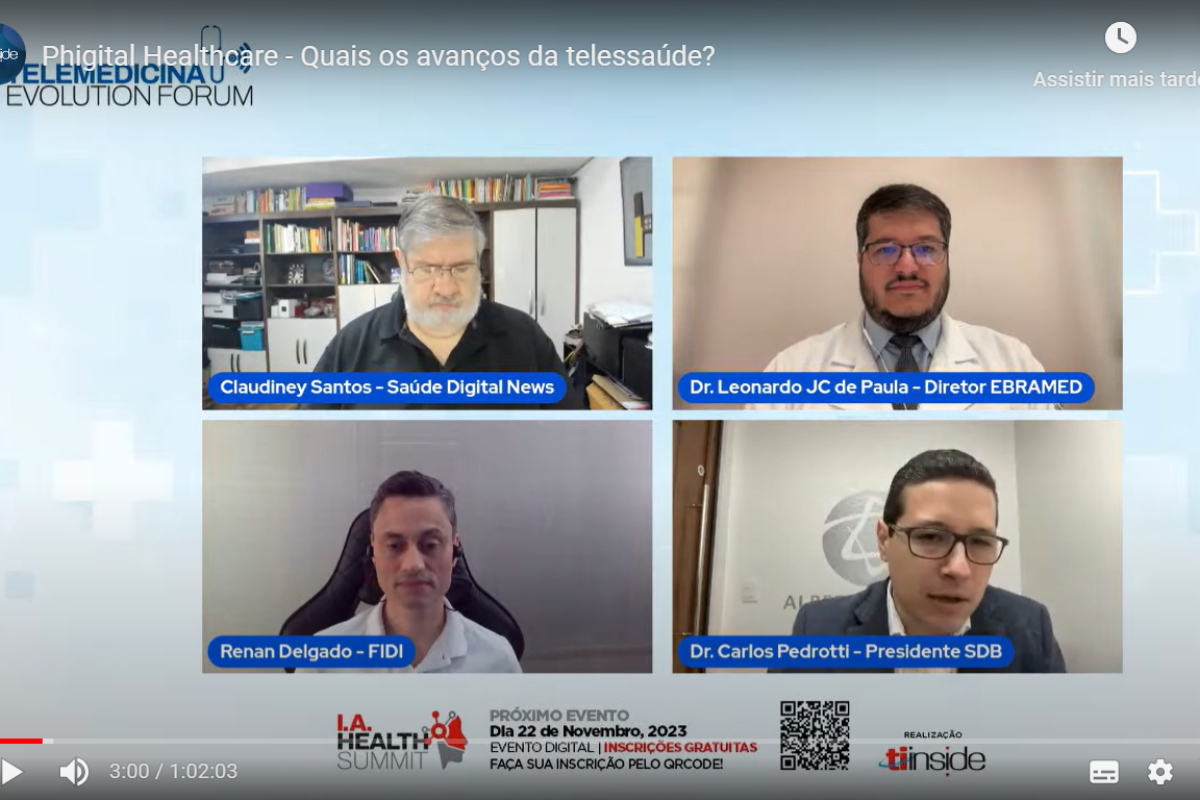Caio Soares, president of SDB, highlighted during the 5×5 Tec Summit 2022 that the current moment is one of optimism, marked by technological advances that can help reduce inequalities and ensure greater access to health care
In its third edition, the 5×5 TEC Summit, an event organized by the portals Convergência Digital, Mobile Time, Tele.Síntese, Teletime and TI Inside, provided three days of debates on the use of technology in different verticals. And, as could not be otherwise, Healthcare was one of them and had a day entirely dedicated to discussions on the needs, opportunities and challenges in the face of technological advances. The event took place on December 7th and featured three panels and the presence of renowned experts. Caio Soares, president of Saúde Digital Brasil, participated in the discussion on the new challenges brought about by the digitalization of the healthcare sector.
Use of data, artificial intelligence, education of professionals, interoperability, the need to solve basic challenges, benefits for the public sector, among others, were points addressed by him and by Cristian Rocha, co-founder & CEO of LAURA; Lucas Baraças, co-founder and CEO of Vigilantes do Sono; and Ricardo Moraes, medical director of Digital Solutions at Afya, who shared the panel with the executive.
Soares highlighted that the current moment is one of great optimism in the digital health sector, mainly due to technological advances, such as 5G, and the progress in the processing of the bill that will regulate telehealth in the country. However, he highlighted that not all the problems that have affected the sector for decades in the physical world can be solved digitally.
“The challenges are often repeated. What we have are good possibilities for improvements in relation to logistics, information security and data protection. These are aspects that are very well addressed with this modality”, he reinforced.
The change in society’s behavior, the understanding of the need to include telehealth in a safe legal framework for all involved – patients, healthcare professionals and technology providers – and the benefits provided by the practice are already evident, according to him. “Some laws are mandatory, while others are a consequence of changes in behavior. In the case of telemedicine, people have already changed their behavior, facilitating the regulatory process. This must go hand in hand with a process of educating healthcare professionals to fill all these gaps. We are a hybrid generation, we were born analog and we will die digital. We have to prepare the way and the new generation for the changes that are underway.”
When asked about the use of telemedicine in the public health system, Soares emphasized that, contrary to what many people think and despite the obstacles that still exist, the Unified Health System (Sistema Único de Saúde) is the biggest beneficiary of digitalization. This is mainly because technology can solve the bottlenecks that involve access to the health system, both in primary care and in specialist care, in addition to shortening the distances and time between diagnosis and treatment, which is crucial for achieving better clinical outcomes and directly and positively impacting the lives of millions of citizens.
“The future is practically limitless. When we look at what has happened in the last ten years, we are surprised, but when we think about the future, the leap will be even greater because of all the progress we are seeing. But we need to have a clear vision that this cannot become a mechanism that increases inequality. Technology is wonderful, but it needs to be inclusive and bring equity so that the health system does not suffer from greater inequality than we already experience,” he concludes.





